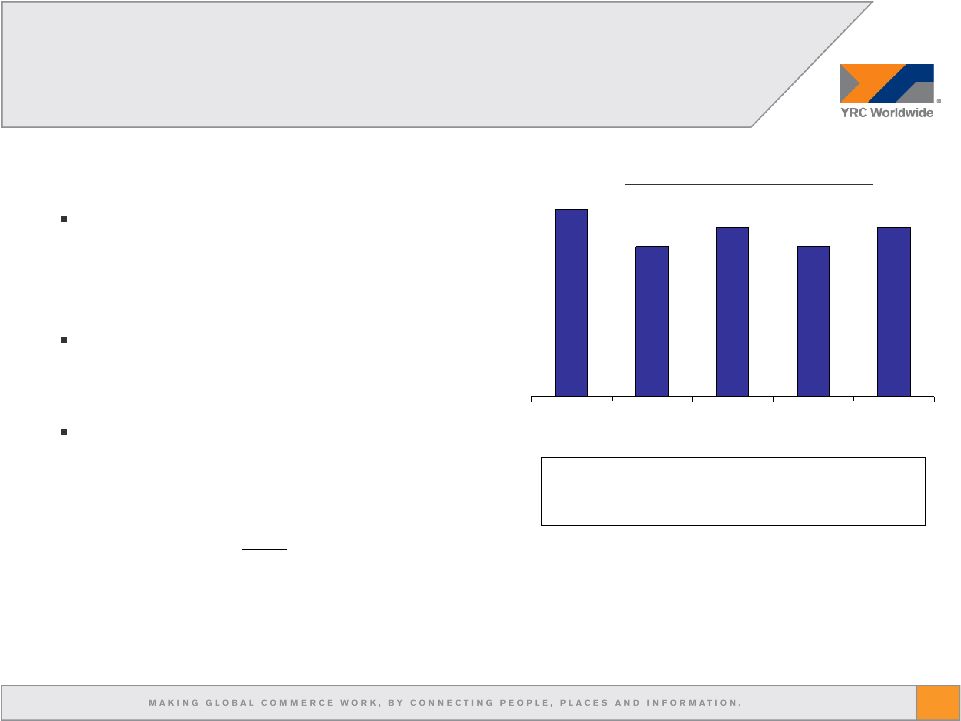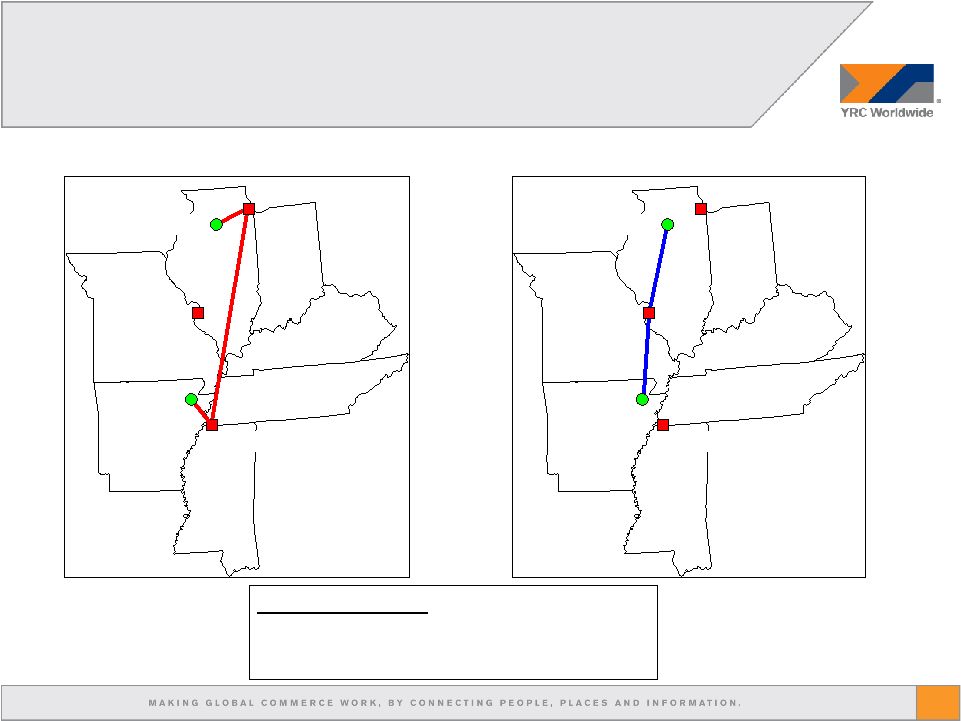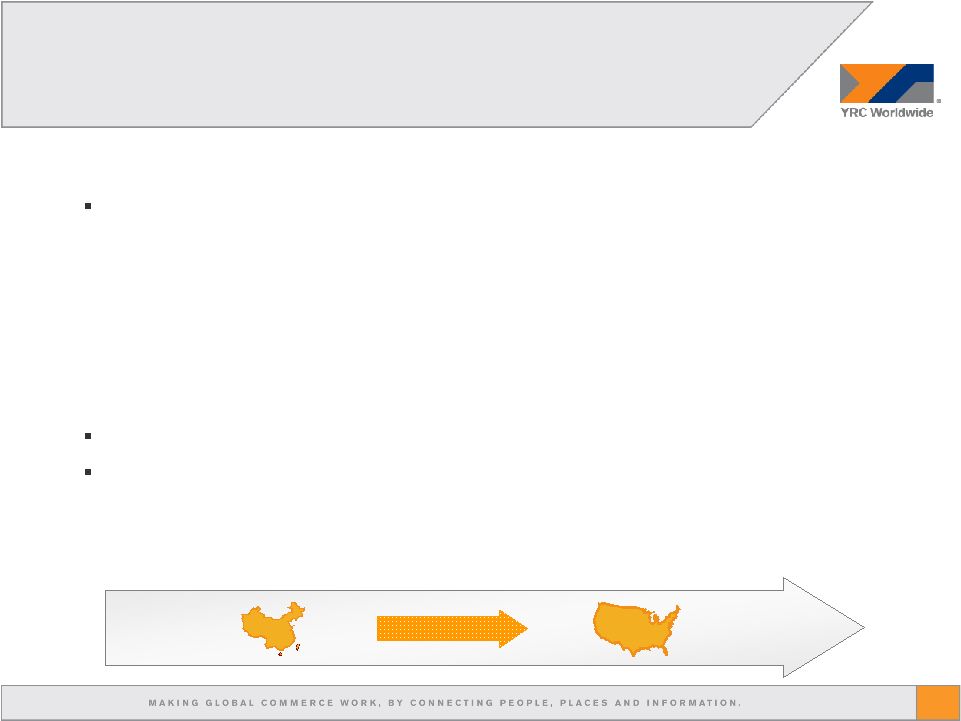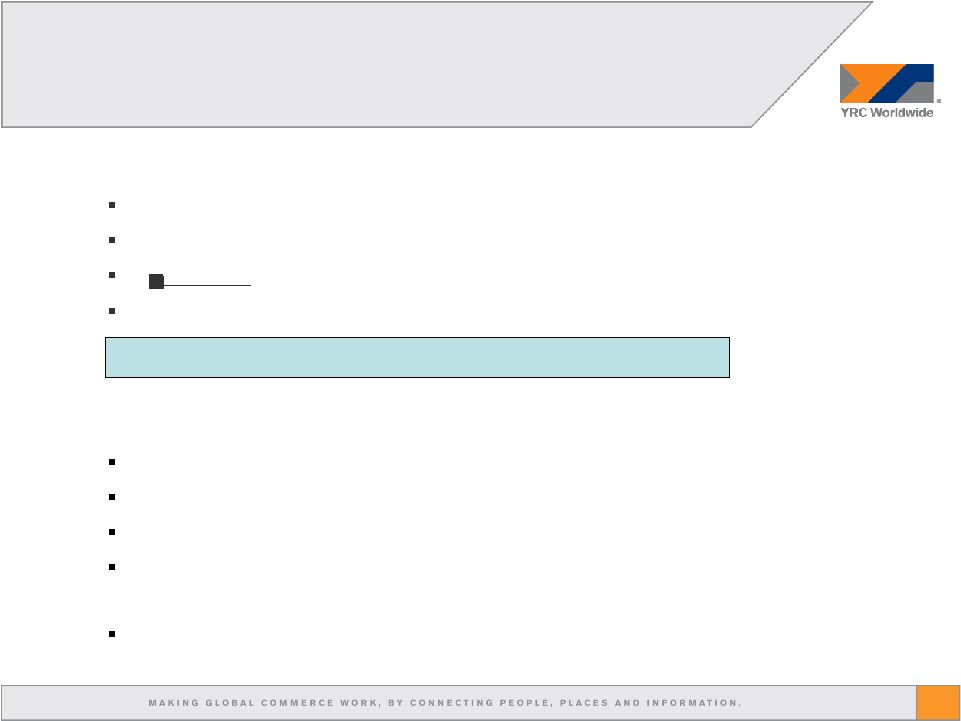10 Forward-Looking Statements Forward-Looking Statements • Pages 6, 8 and 9 of this presentation contain forward-looking statements within the meaning of Section 27A of the Securities Act of 1933, as amended, and Section 21E of the Securities Exchange Act of 1934, as amended. The words “projected”, “expected,” “guidance,” “on track,” and similar expressions are intended to identify forward-looking statements. • The company’s actual future results and earnings per share could differ materially from those projected in such forward- looking statements because of a number of factors, including (among others) inflation, inclement weather, price and availability of fuel, sudden changes in the cost of fuel or the index upon which the company bases its fuel surcharge, competitor pricing activity, expense volatility, including (without limitation) expense volatility due to changes in rail service or pricing for rail service, ability to capture cost reductions, including (without limitation) those cost reduction opportunities arising from acquisitions, changes in equity and debt markets, a downturn in general or regional economic activity, effects of a terrorist attack, labor relations, including (without limitation), the impact of work rules, work stoppages, strikes or other disruptions, any obligations to multi-employer health, welfare and pension plans, wage requirements and employee satisfaction, and the risk factors that are from time to time included in the company’s reports filed with the Securities and Exchange Commission, including the company’s Annual Report on Form 10-K for the year ended December 31, 2007. • The company’s expectation regarding the completion of the Jiayu acquisition is only the company’s expectation regarding the completion. Completion of the acquisition is subject to Chinese regulatory approvals, restructuring of certain of Jiayu's operations and the satisfaction or waiver of the other conditions to closing contained in the definitive acquisition agreement. • The company’s performance improvement target is only the company’s expectation regarding the target. Actual performance improvement could differ materially based on a number of factors including (among others) the ability to identify and implement improvements in the time frame needed to achieve these expectations, the success of the company’s operating plans, the need to spend additional capital to implement improvement opportunities, including (without limitation) to terminate, amend or renegotiate prior contractual commitments, inflation, inclement weather, competitor pricing, fuel costs, expense volatility, economic activity, changes in debt or equity markets, effects of a terrorist attack, effects of labor relations, the accuracy of our estimates of our spending requirements, the occurrence of any unanticipated acquisition opportunities, changes in our strategic direction and the need to replace any unanticipated losses in capital assets. |









